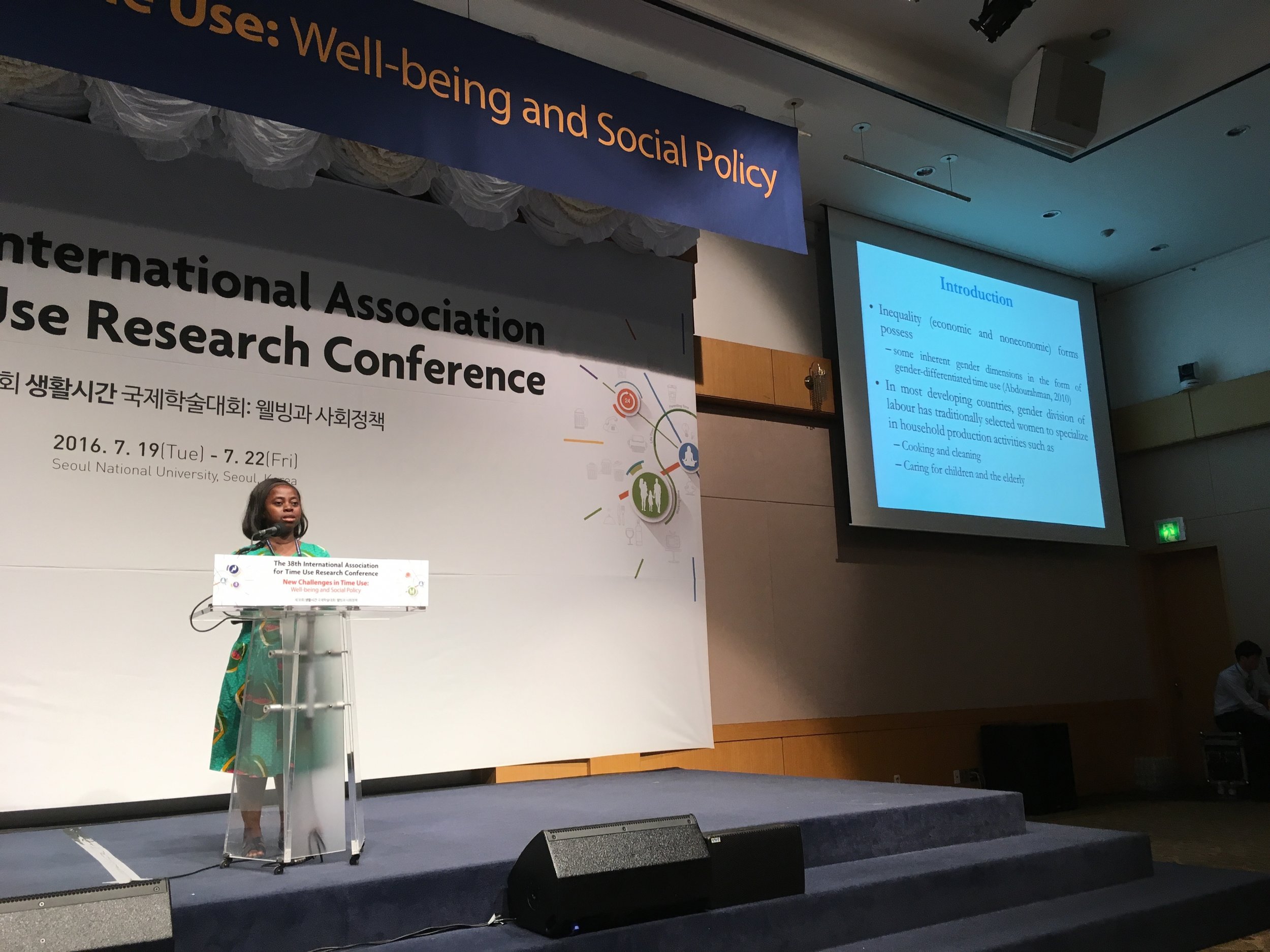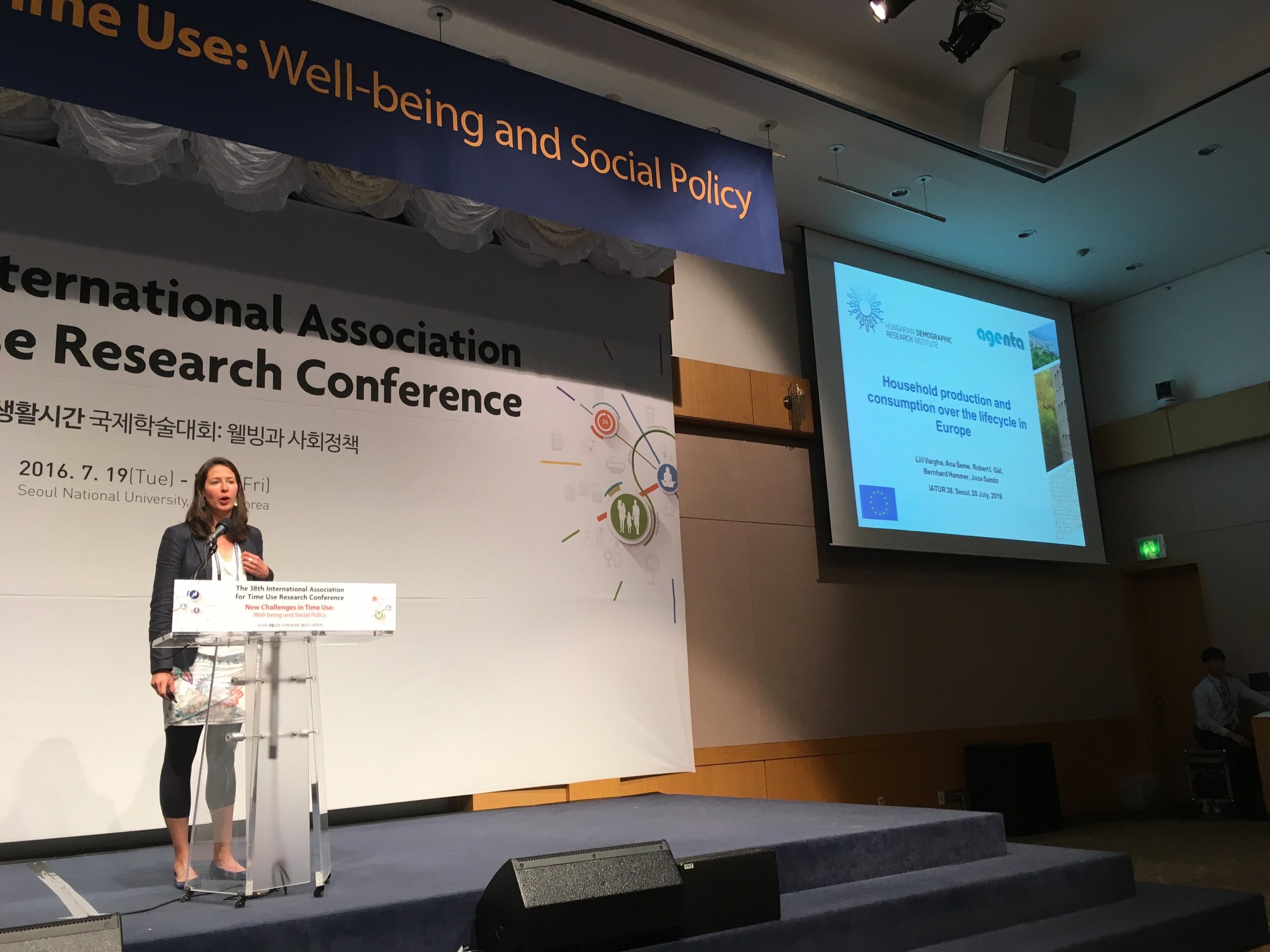Household production and consumption over the life cycle: National Time Transfer Accounts in 14 European countries
A group of European researchers have used CWW methodology to produce the article “Household production and consumption over the life cycle: National Time Transfer Accounts in 14 European countries“ published in the journal Demographic Research.
Vargha, L., Gál, R., and Crosby-Nagy, M., 2017. “Household production and consumption over the life cycle: National Time Transfer Accounts in 14 European countries” Demographic Research, 36: 905-944. DOI: 10.4054/DemRes.2017.36.32
ABSTRACT:
Background: While the importance of unpaid household labour is recognised in total economic output, little is known about the demographics of household production and consumption.
Objective: Our goal is to give a comprehensive estimation on the value of household production and its consumption by age and gender and analyse nonmarket economic transfers in 14 European countries based on publicly available harmonised data.
Methods: We introduce a novel imputation method of harmonised European time use (HETUS) data to the European Union Statistics on Income and Living Conditions (EU-SILC) in order to assign time spent on home production to consumers in households and estimate time transfers. Moreover, monetary values are attributed to household production activities using data on earnings from the Structure of Earnings Survey (SES).
Results: We show that the nonmarket economic life cycle of men differs from that of women. The gender gap in household production is not evenly distributed over the life cycle. Women of working age contribute the most in net terms, while the main beneficiaries of household goods and services are children and to a lesser extent adult men. These patterns are similar across countries, with variations in the gender- and age-specific levels of home production and consumption.
Conclusions: In Europe, in the national economy, intergenerational flows are important in sustaining both childhood and old age. In contrast, in the household economy, intergenerational transfers flow mostly towards children.
Contribution: We add a new focus to the research on household production: While keeping the gender aspect, we demonstrate the importance of the life cycle component in household production.
Winners of the NTA XI Global Workshop Gender Paper Prize
We are pleased to announce the three winners of the Gender Paper Prize at the 11th Global Meeting of the NTA Network, held in Dakar in June 2016. The winning papers feature results from Senegal, Costa Rica, and comparative work covering many countries in Europe.
We are pleased to announce the three winners of the Gender Paper Prize at the 11th Global Meeting of the NTA Network, held in Dakar in June 2016. The winning papers are:
ARBITRAGE MARCHÉ DU TRAVAIL ET MARCHÉ DOMESTIQUE, by Latif Dramani, Oumy Laye, Sene Ndeye Sokhor
CHALLENGES TO INCREASE FEMALE LABOR FORCE PARTICIPATION: GENDER INEQUALITY IN COSTA RICA, by Pamela Jiménez-Fontana
THE PATTERNS OF NON‑MONETARY TRANSFERS IN EUROPE: A HISTORICAL NTTA ANALYSIS BY AGE AND GENDER, by Ana Šeme, Lili Vargha, Tanja Istenič, Jože Sambt
All three papers are available as NTA Working Papers and can be downloaded from the NTA website. Paper abstracts and direct download links are available below.
PAPER ABSTRACTS:
ARBITRAGE MARCHÉ DU TRAVAIL ET MARCHÉ DOMESTIQUE, by Latif Dramani, Oumy Laye, Sene Ndeye Sokhor
In search of well-being, families devote much time on domestic activities including cooking, cleaning, laundry, care for children and senior. Yet these various domestic activities, called "domestic production" are not regarded as an income-generating economic activity and are not sufficiently taken into consideration in the national accounts. The work of Stiglitz et al. (2009) highlight the need to measure this domestic production, to be taken into account in the calculation of household living standards. The method of the National Time Transfer Account (NTTA) was used to measure the time spent on domestic activities. The survey ESPS of 2011 allowed to measure the time spent on domestic activities. The results showed that domestic work time is an average of 7 hours per day for women while it is 30 minutes a day for men. The survey showed that in the paid labor market, the level of men participation in the labor market is significantly higher than that of women with 55.2% of active employed men against 34.3% of active employed women. Moreover, the estimation of women's contribution to the creation of wealth has shown that women produce 35% of the labor income against 65% for men in 2011. By contrast, concerning domestic work, women produce 63% of domestic production and men 37% of this production in 2011. These results demonstrate the existence of an implicit arbitration in households for domestic activity and paid work. In a world where time is increasingly monetized, it is interesting to wonder about the future of domestic work in Senegal and in Africa in general.
Costa Rica is at the end of the demographic transition with an insufficient educational profile to meet the demands of the market. The benefits of the first demographic dividend were not materialize due to the lack of public policies that did not promote better skills for the new generations that will have to support an aging population. In this context, a potential opportunity arises: low female labor force participation poses a scope for accelerating economic growth through greater incorporation of women into the market. This opportunity known as gender dividend, only materialize if public policies reduce the barriers that limit a greater female participation. Despite the rapid growth of the participation rate of women in the market, in the last five years a stagnation of this indicator is observed, which suggests that factors such as care and unpaid work limit the participation of women on the market. Gender inequality in Costa Rica is evident: low female political participation, women as the main responsible for care and policies do not encourage parental responsibility. Some efforts such as childcare networks intend to reduce female unpaid work. However, many of these programs have low coverage and also are target only for people on poverty. In this article I analyze gender inequality on market and unpaid production using the methodology developed by international Counting Women's Work and the project National Transfer Accounts. Also, per capita profiles of key domestic activities by age and sex are analyzed.
THE PATTERNS OF NON‑MONETARY TRANSFERS IN EUROPE: A HISTORICAL NTTA ANALYSIS BY AGE AND GENDER, by Ana Šeme, Lili Vargha, Tanja Istenič, Jože Sambt
This paper analyses the age patterns of production, consumption and net transfers in the form of unpaid work by gender and over time. Using National Time Transfer Accounts methodology, we present the historical results for several European countries for the first time. The results show that the evolution of age patterns over time is different for men and women and is highly affected by different demographic trends, as well as by institutional background of countries. We discover that despite differences over time and across countries, two main characteristics of age patterns do not change: transfers of unpaid work still flow, first, from women to men and secondly, from working‑age population mostly to children and to a lesser extent to the elderly.
Infographic, Spain
CWW infographics summarize the market-based and unpaid care work economy in a country. This post shows the infographic for Spain.
Counting Women’s Work estimates of the market and unpaid care work economies can be summarized with a series of statistics. CWW produces infographics to show these results. Infographics are available with a dark or light background. The infographic for Spain is shown below.
All infographics are licensed under a Creative Commons Attribution-NonCommercial 4.0 International License.
Counting Women's Work at 38th International Association for Time Use Research Conference
The Counting Women's Work project presented a special session at the 38th International Association of Time Use Research (IATUR) Conference, hosted in Seoul, South Korea, July 2016. The session provided a useful opportunity to engage more closely with the time-use research community.
The Counting Women's Work project presented a special session at the 38th International Association of Time Use Research (IATUR) Conference, hosted in Seoul, South Korea, from 19 to 22 July 2016. The session was well received and provided a useful opportunity to engage more closely with the time-use research community.
The following presentations were made:
Gretchen Donehower: Age and Gender in Time Use-Based Estimates of the Care Economy and Household Production
Morne Oosthuizen: Counting Women's Work in South Africa
Eugenia Amporfu: Measuring the Distribution of Housework among Men and Women in Ghana
Lili Vargha: Household production and consumption over the lifecycle in Europe
Estela Rivero: Intergenerational time transfers and time use in Mexico. A 2002-2014 comparison
The age-profile of invisible transfers: The true size of asymmetry in inter-age reallocations
Affiliated CWW researchers have publisehd "The age-profile of invisible transfers: The true size of asymmetry in inter-age reallocations" by Róbert Gál, Endre Szabó, and Lili Vargha.
Note that this article is written by CWW-affiliated researchers who use comparable methods but were part of a different project.
Gál, R., Szabó, E., and Vargha, L., 2015. "The age-profile of invisible transfers: The true size of asymmetry in inter-age reallocations". The Journal of the Economics of Ageing, 5: 98-104.
ABSTRACT:
We argue that the institutional composition of funding consumption in the two dependent sections of the lifecycle, childhood and old age, are different. To put it sharply, children are raised by their parents, the elderly rely on society. Since the reallocation of resources within and between households are not registered in National Accounts, the majority of the resources transferred to children are not visible in contrast to resources flowing to the elderly, which are almost entirely observed in public statistics. For our analysis we apply a recent extension of National Accounts, called the National Transfer Accounts, which include private transfers; and a further, experimental extension, the National Time Transfer Accounts, which quantifies the value of time transferred among household members in the form of unpaid household labor. We show that less than one third of the full transfer package flowing to children is registered in the National Accounts and another roughly one third is made visible by the National Transfer Accounts. The remaining one third, which is the value of parents caring for their children, is made visible by the National Time Transfer Accounts. The corresponding shares in funding old age are quite different: 90 percent is observed in public statistics and the two accounting extensions unfold only a bit less than 10 percent.
Categories
Tags
- Africa 3
- Asia 3
- Audio 2
- Brazil 1
- Burkina Faso 2
- Colombia 10
- Costa Rica 10
- Covid19 2
- Cross-country 19
- El Salvador 1
- Europe 5
- Example Code 1
- Fertility 2
- Gender Dividends 3
- Ghana 4
- Hispanic ethnicity 1
- Human Capital 1
- Hungary 1
- India 3
- Kenya 2
- Latin America 7
- Mauritius 2
- Methodology 6
- Mexico 4
- Policy-related 10
- Senegal 5
- Slides 10
- Slovenia 1
- South Africa 9
- South Korea 2
- Spain 2
- Spanish language 4
- Turkey 1
- United States 3
- Uruguay 2
- Video 7
- Vietnam 4
- Web Conference 4













